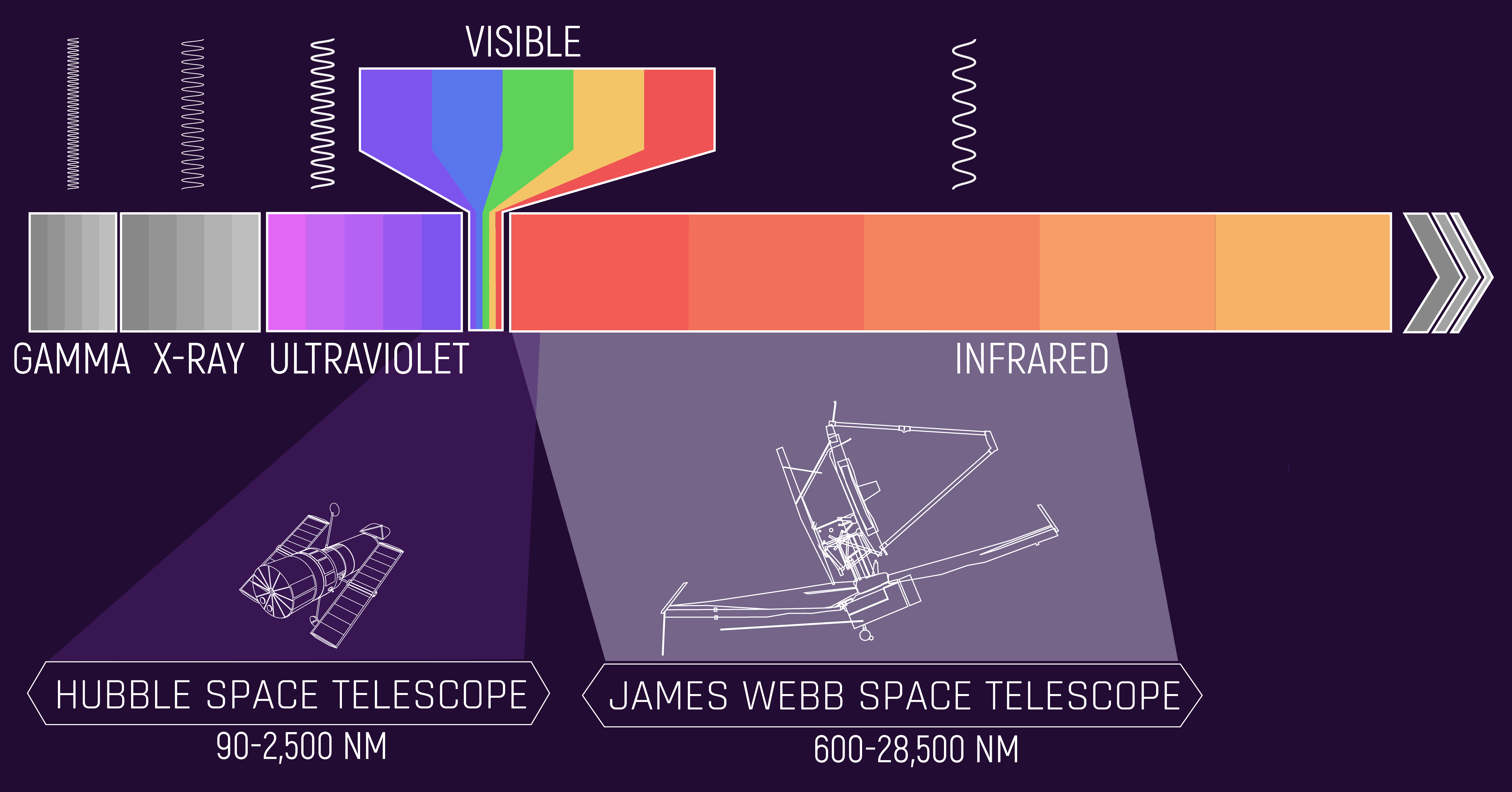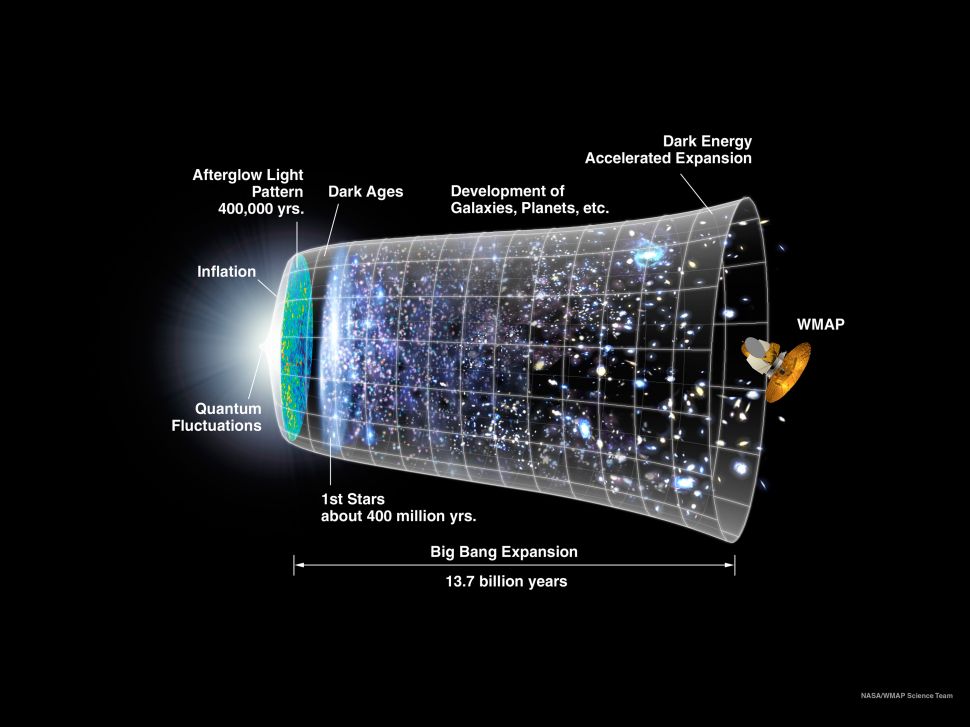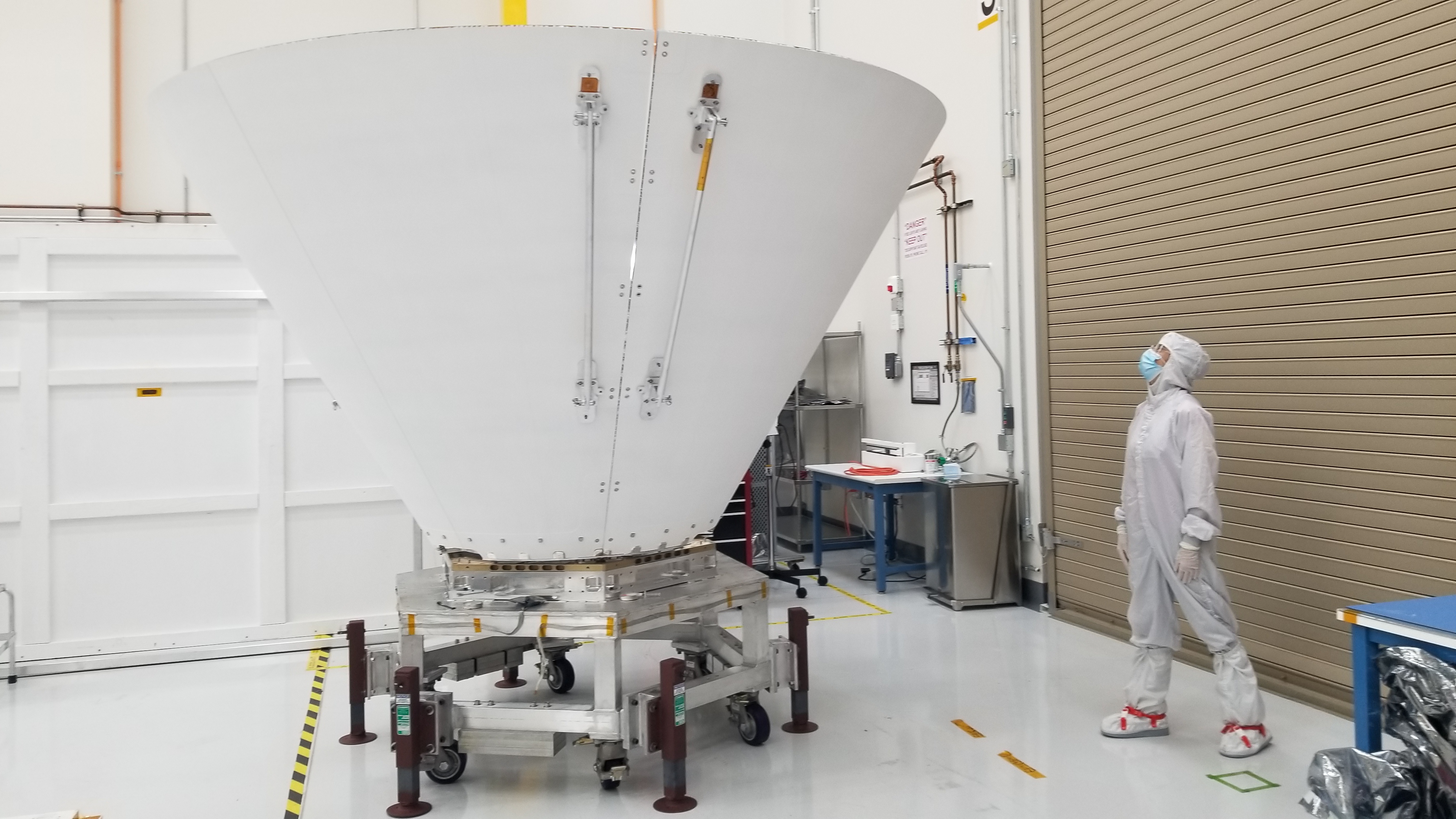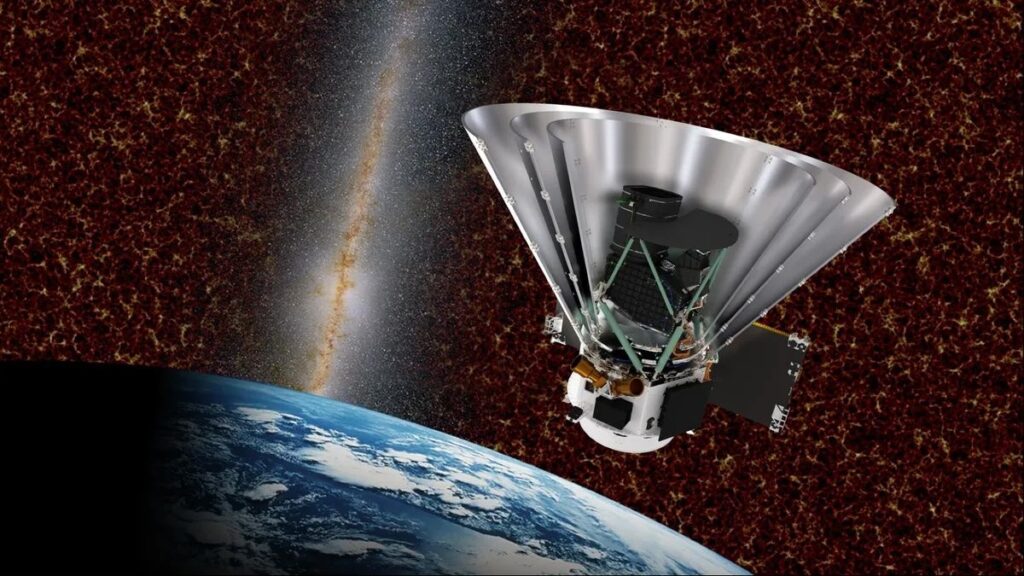In late February, if all goes to plan, a new character will enter NASA’s space telescope epic. It’s an eggshell white, conical probe named SPHEREx, which (get ready for a mouthful) stands for Spectro-Photometer for the History of the Universe, Epoch of Reionization and Ices Explorer. And, because it works with infrared light, SPHEREx is meant to reveal things even the trailblazing James Webb Space Telescope cannot.
“Taking a snapshot with JWST is like taking a picture of a person,” Shawn Domagal-Goldman, acting director of the Astrophysics Division at NASA Headquarters, told reporters on Jan. 31. “What SPHEREx and other survey missions can do is almost like going into panorama mode, when you want to catch a big group of people and the things standing behind or around them.”
Launch is presently scheduled for no earlier than Feb. 27 aboard a SpaceX Falcon 9 rocket — and SPHEREx won’t be the only payload. As part of NASA’s Launch Services Program, which connects space missions with appropriate commercial launch vehicles, SPHEREx will share its ride with the agency’s PUNCH (Polarimeter to Unify the Corona and Heliosphere) mission, a constellation of four little satellites meant to study the sun. The duo will lift off from Launch Complex 4E at Vandenberg Space Force Base in Central California.
Related: Chinese astronauts make rocket fuel and oxygen in space using 1st-of-its-kind ‘artificial photosynthesis’
“This is the third launch of this reusable booster, which was previously flown on the Transporter 12 mission on January 14,” Cesar Marin, SPHEREx integration engineer for the Launch Services Program at NASA’s Kennedy Space Center in Florida, said during the briefing, referring to the Falcon 9’s first stage. “The booster will be applying its phenomenal capacity of returning once again to land in zone four at Vandenberg Space Force Base about eight minutes after launch.”
The promise of SPHEREx
Over two years — unless NASA decides to extend the mission — SPHEREx will map the universe while detecting two kinds of cosmic light: optical and infrared.
Optical light is visible to the human eye, and is the specialty of many telescopes including the Hubble Space Telescope, while infrared light is invisible to us and is more akin to a heat signature. Infrared is the James Webb Space Telescope’s speciality, and is in fact why the JWST has been so iconic in showing us things in the universe that have remained hidden for so long. It is the universe’s infrared light that possesses information about the farthest reaches of space, the stars being born within blankets of dust, and the details of galactic structures that are showing scientists the cosmic equivalent of new colors.
There have indeed been other infrared eyes on the sky — like the now-retired Spitzer Telescope, and even Hubble has some capabilities in this realm — but none really match up to the JWST.
SPHEREx could, though (in a way).
To be fair, SPHEREx won’t rival the JWST’s ability to observe highly localized regions of the universe that are confined to the infrared section of the electromagnetic spectrum. However, unlike the JWST, it is an all-sky survey. Whereas the $10 billion JWST is great at observing things like specific nebulas and relatively narrow but tremendously dimensional deep fields, SPHEREx is intended to image the entire sky as seen from Earth.
“We are literally mapping the entire celestial sky in 102 infrared colors for the first time in humanity’s history, and we will see that every six months,” said Nicky Fox, associate administrator for NASA’s Science Mission Directorate. “This has not been done before on this level of color resolution for our old sky maps.”

“In terms of all-sky survey missions,” Jamie Bock, principal investigator of SPHEREx at the California Institute of Technology in Pasadena, said during the briefing, “generally, these have been done in photometry, looking at the sky in broad bands and handfuls of broad bands — not this complete spectrum.”
The SPHEREx targets
As to what SPHEREx will be searching for? Well, considering the space telescope will be pretty much mapping everything in the sky from its special dawn-dusk sun synchronous orbit that keeps it cool enough to study infrared emissions — the list is endless.
To name a few goals, however, scientists wish to learn about lots of galaxies at various points in their histories to enhance our knowledge of galactic evolution, and they want to peer into the empty space between stars to see if there are any icy organics floating around to trace how life on Earth might have begun.
“Shout out to our team at OSIRIS-REx in the Planetary Division,” Domagal-Goldman said. “They pick up that story and then tell how it traverses in our solar system to planets like our home.”
Scientists also hope to capture three-dimensional views of hundreds of millions of galaxies to further our understanding of cosmic inflation —the theory that, moments after it was born, the universe experienced a mind-blowing amount of expansion. It was as though a balloon suddenly inflated.
“Literally a trillionth of a trillionth of a billionth of a second after the Big Bang, the observable universe went through a remarkable expansion,” Bock said, “expanding a trillion trillion fold, and that expansion expanded tiny fluctuations smaller than an atom, to enormous cosmological scales that we see today.”
“We still don’t know what drove inflation or why it happened,” he said.

It’s usually the case that different space missions benefit one another down the line, but such collaboration seems especially prevalent here. Most obviously, because the JWST is so adept at infrared imaging, it will be tremendously useful for SPHEREx to present JWST scientists with an all-sky infrared map so they’ll know what areas to zero in on. And, as mentioned, the OSIRIS-REx asteroid-sampling mission (now known as OSIRIS-APEX after its new asteroid target, the notorious Apophis) is also trying to connect the dots when it comes to organics scattered across space.
We’ll also see a major ground-based telescope, the Vera Rubin Observatory, see first light later this year, if all goes according to plan. Rubin will be mapping gigantic sections of the sky as well, though in different wavelengths — but that just means another filter of observations to add onto SPHEREx’s maps.
“No single instrument, no one instrument, no single mission can tell us the full story of the cosmos,” Domagal-Goldman said. “Those answers to the big questions like that, they come from the power of combined observations from combined observatories.”
SPHEREx logistics
“SPHEREx is a testament to doing big science with a small telescope,” Beth Fabinsky, deputy project manager of SPHEREx at NASA’s Jet Propulsion Laboratory in Southern California, said during the briefing.
The team says SPHEREx costs about $488 million (excluding some costs to come) which sounds like a lot, but is rather modest in terms of space mission pricetags. That’s especially true when considering what SPHEREx could ultimately offer to our scientific textbooks.
Within this budget, the spacecraft was also meticulously crafted, with attention given to several key aspects of its structure.
“It weighs about 1,100 pounds, so a little less than a grand piano, and uses about 270-300 watts of power — less than a refrigerator,” Fabinsky said. “It produces more power than it needs using a thick solar array, very much like one you might have on the roof of your house.”
But the most pressing concern when it comes to infrared imaging is that the instrument doing the imaging cannot be exposed to heat because that interferes with the data. “If they are too warm, they will be blinded by their own warm glow,” Fabinsky said. Yet unfortunately, in space, you’ll find there is one of the hottest possible objects a spacecraft can be exposed to: the sun.

That’s why SPHEREx’s specific orbit was chosen to keep it away from sunlight, as briefly discussed; this was also a big part of the James Webb Space Telescope’s construction and placement. The JWST is also in a location designed to shield it from the sun’s warmth at all times, known as Lagrange Point 2.
“We have three concentric cone-shaped photon shields,” Fabinsky said, explaining more about how the team plans to keep SPHEREx at appropriately frigid temperatures. “They protect the instrument enclosed in the center from sunlight and Earthshine together with three curved plates at the bottom of the payload called the V-groove radiator. They help radiate heat away from the warm spacecraft beneath the payload.”
Once SPHEREx is safely in space, fully deployed, and correctly booted up, the team will begin the effort to conduct the mission’s first six-month survey of the sky. “The main form of data release is that we put out what we call calibrated spectral images, and those come within two months of observation,” Bock said, though he emphasized that there is one specific achievement he’s lasered on for the foreseeable future:
“I have to say that the moment I’m looking forward to is once we pop the lid off the telescope and take in our first image — that’ll tell us everything’s working as expected.”
Originally posted on Space.com.
